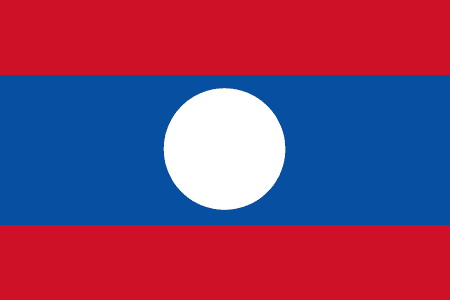Login form
Customs of Laos
 Marriage and Family
Marriage and Family
Young people are relatively free to choose marriage partners. Marriage is traditionally established by a ceremony held at the bride’s home. For the first few years of married life, a couple may live with the wife’s family and then establish their own home. However, the youngest daughter and her family tend to remain with her parents to care for them.
The Lao have large families; the average household has seven persons. Families are usually nuclear, but sometimes grandparents or aunts and uncles live with the family. The eldest man is the patriarch of the family, and he represents the household at village meetings. The Lao have great respect for their parents and elders. Among the Hmong, larger households are more common, and might include unmarried women of the family and families of the children. Usually, married sons and their families eventually move out and form their own households.
Eating
Sticky, or glutinous, rice is the staple of the Lao diet. Lap (sautéed meat mixed with onions, lemon grass, and spices, and served with a rice-flour sauce) is a typical Lao food. Other foods include fish, eggs, chicken, pork, owl, and (occasionally) beef. Rice is usually served with chili sauce or a spicy sauce made with fermented fish. Beverages include coffee and tea. Cultivated foods are often supplemented with wild fruits and vegetables from the forest as well as game, such as deer. Hill people grow dry rice by practicing slash-and-burn agriculture. The government is attempting to save the forest areas for other uses by resettling some of these people to lower ground. There they live near water supplies but away from the foods of the forest that they have traditionally eaten.
Generally, the Lao eat with a fork in the left hand and a spoon in the right. However, glutinous rice is eaten with the fingers, which are cleaned with a napkin. Lao food, which is spicy, is served in communal dishes with meat and vegetables cut into bite-size pieces. In a traditional home, diners sit on a mat on the floor. As a sign of respect to a guest, the host and family will not raise their heads above the level of the guest’s. Therefore, they may serve the food in a squat position so as not to offend guests.
Socializing
The generally accepted form of greeting among Lao people is the nop, which involves placing one’s hands together in a prayer position at chest level but not touching the body. The higher the hands, the greater the sign of respect; however, the hands should never be held above the level of the nose. This is accompanied by a slight bow to show respect for persons of higher status or age. The nop is not only an expression of greeting but also of thanks or regret. The Lao address each other by the first name. Children address adults by the first name, prefaced by the equivalent of “Mr.” or “Mrs.” or, if well acquainted, “Mr. Uncle” or “Mrs. Aunt.”
It is customary to remove one’s shoes or sandals when entering a Buddhist temple or a private home. In Lao homes that are raised off the ground, shoes or sandals are left at the bottom of the stairs. In a traditional home, a person sits on low seats or cushions on the floor. Men may sit with legs crossed or folded to one side. Women sit with legs off to the side. When guests are served refreshments, it may cause offense if they do not at least sample a small amount. It is not customary to bring a gift when visiting.
Recreation
Popular sports include soccer, volleyball, table tennis, badminton, and kato, which is played by trying to keep a rattan ball in the air without using the hands. Entire families often participate in dances at community celebrations. Discos are becoming popular in the cities.
Holidays and Celebrations
Official holidays include International New Year (1 January); Pi Mai, the Lao New Year, governed by the lunar calendar and usually in May; Labor Day (1 May); and National Day (2 December), the largest celebration. Religious holidays include Boun Bang Fai in May or June, celebrating the birth, enlightenment, and death of Buddha; Khao Phansa, the advent of Buddhist Lent in July, and Ork Phansa, its conclusion in late October; and Boun That Luang, a festival in November at a temple housing a relic of Buddha. All important events are celebrated with a basi or sukhwan, a celebration involving offerings, food, and rice wine. In a string-tying ceremony, people wish good health and prosperity to friends by tying a string on the wrist.
Source: Encarta Interactive World Atlas

